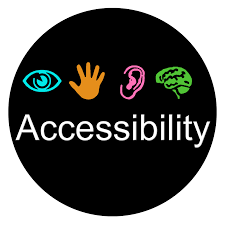A Guide for Accessible Meetings
And better meetings for your whole team to boot

A couple of years ago a Deaf colleague, Ben, joined our team and was regularly accompanied in the office by an interpreter. It quickly became clear that the chaotic and ad-hoc process we used for conducting our meetings made it difficult for Ben and his interpreter to gain value from them.
After taking just a few minutes to understand what about our meetings were difficult for Ben we came up with some guidelines for the team to use.
The main problems that Ben and his interpreter were having during our meetings were as follows:
It was hard for Ben’s interpreter to communicate who was saying what during meetings as she didn’t always know everyone’s name in the room, and people often talked over each other
Meetings proceeded at a pace that was too fast, and with too many people talking at once for the interpreter to translate effectively
It was hard for Ben and his interpreter to understand the focus and flow of the meeting as there was usually no agenda
Meetings were tiring. Long and chaotic meetings require a lot of focus from Ben and his interpreter and left them exhausted
Unsurprisingly these were problems that the hearing members of the team also faced in some form or another, and the guidelines we came up with quickly made meetings more effective for the whole team.
Here are the guidelines:
If a new interpreter is in the meeting, or any of the attendees don’t know each other, the group does a round robin at the start of the meeting to introduce themselves with their name and role
Meetings take place in a room that has a screen so that any materials can be clearly seen by all — no huddling round a little laptop screen
Good: Only one person is talking at a time Great: A visual cue, such as as a board marker or ball is held by the person who’s talking
Good: Meeting has a clear agenda, which is written down Great: Agenda is shared with attendees in advance, and reviewed at the start of the meeting
Good: There is a clear indication during the meeting when moving through agenda items Great: The indication is visual as well as verbal — E.G. the agenda is written on flip chart paper and items are crossed off as they are covered
Good: Meetings over 45 minutes long include a 5 minute break in the middle for recovery time Great: Meetings are less than 45 minutes long ;)
We found using these guidelines really helpful and continued to use many of them even when Ben wasn’t present.
Even if you don’t need to make your meetings more accessible you might still like to try some of these points to enjoy the happy side effect of making them more focused, understandable, and effective.